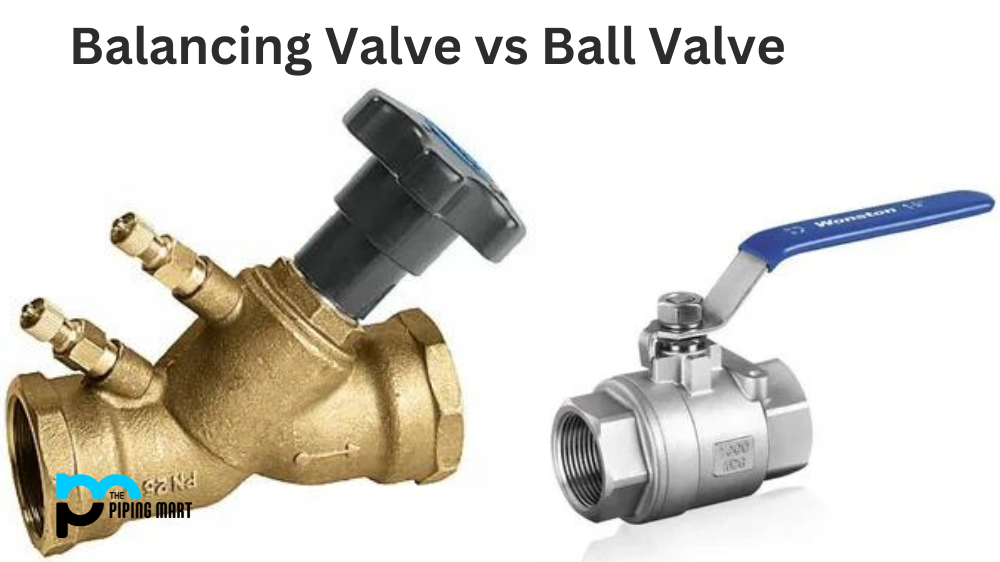Heating, ventilation, and air conditioning (HVAC) systems are significant investments that require proper maintenance and care. One of the critical components of your HVAC system is the valve, which regulates the flow of water or air throughout the HVAC system. However, not all valves are created equal. Two popular types of valves are the balancing valve and the ball valve. This blog post will compare these valves and help you determine the best choice for your HVAC system.
Balancing Valve
Balancing valves are designed to regulate the flow of water in HVAC systems. They are commonly used to balance hydronic heating and cooling systems, ensuring that each zone or radiator receives the right amount of water flow. The balancing process involves adjusting the valve to the correct position and determining the flow rate.
Balancing valves come in different types, including globe, butterfly, and ball valves. Globe valves are the most common type of balancing valve, and they feature a circular disc that moves perpendicular to the flow direction. Butterfly valves are similar to globe valves but feature a disc that rotates perpendicular to the flow direction. On the other hand, ball valves are the newest type of balancing valve, and they feature a round ball that rotates.
Ball Valve
Ball valves are a popular type of valve used in HVAC systems. These valves are typically used for on-off control of the flow. Ball valves feature a round ball with a hole in its centre that allows fluid to flow through when the hole is aligned with the pipe. When the valve is closed, the ball is rotated so the hole is perpendicular to the flow direction.
Ball valves are not designed for balancing applications, as their design does not allow for flow regulation. They are mainly used for control purposes and isolation of piping systems.
Differences Between Balancing Valve and Ball Valve
The primary difference between balancing valves and ball valves is their application. Balancing valves are used for flow regulation and balancing, while ball valves are used for on-off control and isolation of piping systems. Balancing valves are essential for maintaining a consistent flow rate throughout the HVAC system, while ball valves are essential for controlling the flow.
Another significant difference is the design. Balancing valves feature a globe, butterfly, or ball disc design that allows for flow regulation, while ball valves feature a round ball that rotates for on-off control. Balancing valves are typically more expensive than ball valves but offer better flow control and balancing capabilities.
Which One is Best for Your HVAC System?
The choice between a balancing valve and a ball valve depends on the function you want to achieve. A balancing valve is the best choice if you need to regulate water flow and balance your HVAC system. However, a ball valve is the best option to control the flow and isolate piping systems.
It is also essential to consider the cost and the installation process when choosing between these valves. Balancing valves are typically more expensive and need professional installation, while ball valves are cheaper and can be DIY installed with the right tools and experience.
Other Differences
- Balancing valves regulate water flow through a system to achieve desired results, such as maintaining a constant temperature.
- On the other hand, ball valves are used to shut off the flow of water completely.
- Balancing valves are more expensive than ball valves.
- Balancing valves are more complex than ball valves and require more maintenance.
- Ball valves are less likely to leak than balancing valves.
- Balancing valves can be adjusted to regulate water flow through a system, while ball valves can only be turned on or off completely.
- Balancing valves are more precise than ball valves and can be used to control the temperature of a system more accurately.
- Ball valves are less likely to fail than balancing valves.
Conclusion
In summary, choosing between a balancing valve and a ball valve for your HVAC system depends on the function you want to achieve. Balancing valves are used for flow regulation and balancing, while ball valves are used for on-off control and isolation of piping systems. Balancing valves offer better flow control and balancing capabilities but are more expensive than ball valves. Ball valves are cheaper and easy to install but do not offer flow regulation. Ultimately, it is best to consult an HVAC expert before choosing a valve for your system to ensure optimum performance and efficiency.

Pipingmart is a B2B portal that specializes in metal, industrial and piping items. Additionally, we share the latest information and information about materials, products and various types of grades to assist businesses that are involved in this business.




